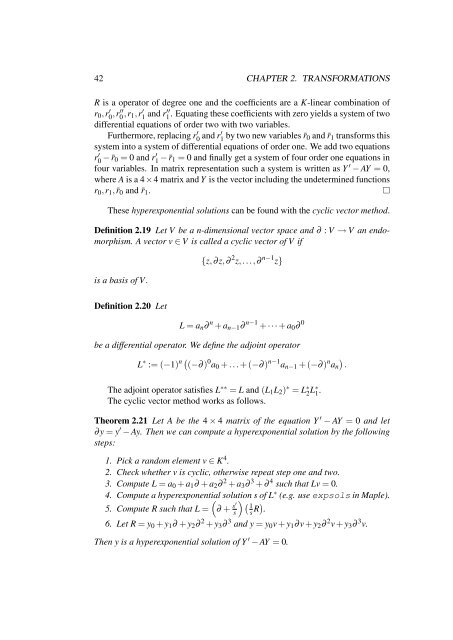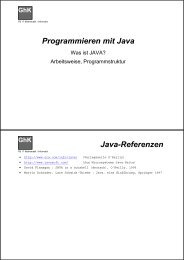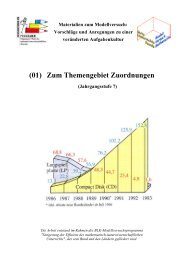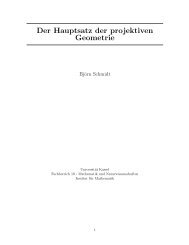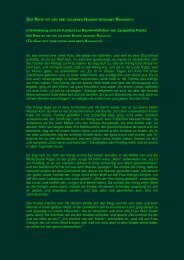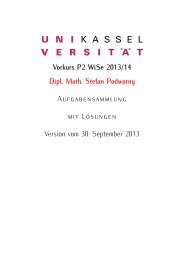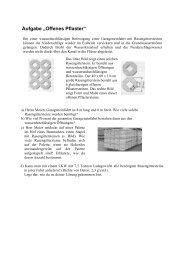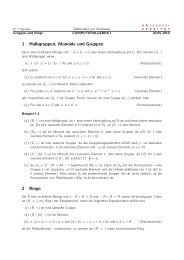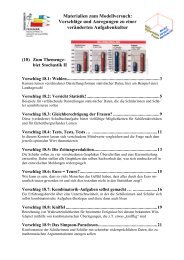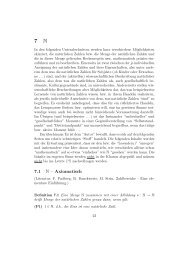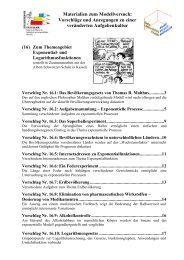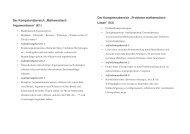Solving Differential Equations in Terms of Bessel Functions
Solving Differential Equations in Terms of Bessel Functions
Solving Differential Equations in Terms of Bessel Functions
Create successful ePaper yourself
Turn your PDF publications into a flip-book with our unique Google optimized e-Paper software.
42 CHAPTER 2. TRANSFORMATIONS<br />
R is a operator <strong>of</strong> degree one and the coefficients are a K-l<strong>in</strong>ear comb<strong>in</strong>ation <strong>of</strong><br />
r0,r ′ 0 ,r′′ 0 ,r1,r ′ 1 and r′′ 1 . Equat<strong>in</strong>g these coefficients with zero yields a system <strong>of</strong> two<br />
differential equations <strong>of</strong> order two with two variables.<br />
Furthermore, replac<strong>in</strong>g r ′ 0 and r′ 1 by two new variables ¯r0 and ¯r1 transforms this<br />
system <strong>in</strong>to a system <strong>of</strong> differential equations <strong>of</strong> order one. We add two equations<br />
r ′ 0 − ¯r0 = 0 and r ′ 1 − ¯r1 = 0 and f<strong>in</strong>ally get a system <strong>of</strong> four order one equations <strong>in</strong><br />
four variables. In matrix representation such a system is written as Y ′ − AY = 0,<br />
where A is a 4×4 matrix and Y is the vector <strong>in</strong>clud<strong>in</strong>g the undeterm<strong>in</strong>ed functions<br />
r0,r1, ¯r0 and ¯r1. <br />
These hyperexponential solutions can be found with the cyclic vector method.<br />
Def<strong>in</strong>ition 2.19 Let V be a n-dimensional vector space and ∂ : V → V an endomorphism.<br />
A vector v ∈ V is called a cyclic vector <strong>of</strong> V if<br />
is a basis <strong>of</strong> V .<br />
Def<strong>in</strong>ition 2.20 Let<br />
{z,∂z,∂ 2 z,...,∂ n−1 z}<br />
L = an∂ n + an−1∂ n−1 + ··· + a0∂ 0<br />
be a differential operator. We def<strong>in</strong>e the adjo<strong>in</strong>t operator<br />
L ∗ := (−1) n (−∂) 0 a0 + ... + (−∂) n−1 an−1 + (−∂) n <br />
an .<br />
The adjo<strong>in</strong>t operator satisfies L ∗∗ = L and (L1L2) ∗ = L ∗ 2 L∗ 1 .<br />
The cyclic vector method works as follows.<br />
Theorem 2.21 Let A be the 4 × 4 matrix <strong>of</strong> the equation Y ′ − AY = 0 and let<br />
∂y = y ′ − Ay. Then we can compute a hyperexponential solution by the follow<strong>in</strong>g<br />
steps:<br />
1. Pick a random element v ∈ K4 .<br />
2. Check whether v is cyclic, otherwise repeat step one and two.<br />
3. Compute L = a0 + a1∂ + a2∂ 2 + a3∂ 3 + ∂ 4 such that Lv = 0.<br />
4. Compute a hyperexponential solution s <strong>of</strong> L∗ <br />
(e.g. use expsols <strong>in</strong> Maple).<br />
5. Compute R such that L = ∂ + s′<br />
1s<br />
s R .<br />
6. Let R = y0 + y1∂ + y2∂ 2 + y3∂ 3 and y = y0v + y1∂v + y2∂ 2v + y3∂ 3v. Then y is a hyperexponential solution <strong>of</strong> Y ′ − AY = 0.


